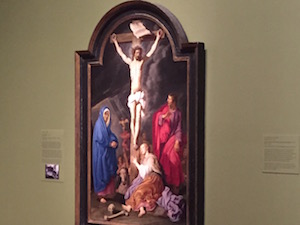 It was a refreshing surprise to delve into a different type of art form today. Up to this point, we have only expressed ourselves through paper but today we got our hands dirty with clay. We were instructed to make vases with designs that had significant meaning or memories. This allowed many opportunities to bond with our PALs as we constructed our individual vases. As a Filipino, I’ve always been surrounded by all sorts of music. In turn, I grew up with great appreciation for it and decorated vase with musical notes. My partner, Marty, had a much more dynamic piece. Prior to this program, Marty was a bus driver for the JCC and a manager for Saxon shoes. These were his 2 favorite jobs so he incorporated them into his vase by cutting out a rather detailed JCC bus and 3 types of shoes. We had a great time with this class especially since this was our first experience with clay. Our backgrounds definitely came out in our projects. When we were asked to decorate the vase with significant memories, it forced us think about it. With both of us having much else to worry about in the present, it’s hard to find time to reminisce about the past. These memories are the factors that made us who we are so it was revitalizing to bring out and discuss with someone else.
It was a refreshing surprise to delve into a different type of art form today. Up to this point, we have only expressed ourselves through paper but today we got our hands dirty with clay. We were instructed to make vases with designs that had significant meaning or memories. This allowed many opportunities to bond with our PALs as we constructed our individual vases. As a Filipino, I’ve always been surrounded by all sorts of music. In turn, I grew up with great appreciation for it and decorated vase with musical notes. My partner, Marty, had a much more dynamic piece. Prior to this program, Marty was a bus driver for the JCC and a manager for Saxon shoes. These were his 2 favorite jobs so he incorporated them into his vase by cutting out a rather detailed JCC bus and 3 types of shoes. We had a great time with this class especially since this was our first experience with clay. Our backgrounds definitely came out in our projects. When we were asked to decorate the vase with significant memories, it forced us think about it. With both of us having much else to worry about in the present, it’s hard to find time to reminisce about the past. These memories are the factors that made us who we are so it was revitalizing to bring out and discuss with someone else.
Alvin Maraya, graduate student in Pharmacy.

 Today, we had a cultural outing at the VMFA. We were split up into two groups, those who have been there before and those who have not been. My PAL, Shirley and I have both been to VMFA, so we went with the group that would get a more in-depth view of artistic style over the centuries. It was fascinating because the concept of art is organic, it continues to change over time; however, the concept of ageism is still present in art. Even the tour guide said that those who are older do not appreciate modern day or 20th century art because it isn’t “real.” It is interesting how ageist stereotypes even exist in art.
Today, we had a cultural outing at the VMFA. We were split up into two groups, those who have been there before and those who have not been. My PAL, Shirley and I have both been to VMFA, so we went with the group that would get a more in-depth view of artistic style over the centuries. It was fascinating because the concept of art is organic, it continues to change over time; however, the concept of ageism is still present in art. Even the tour guide said that those who are older do not appreciate modern day or 20th century art because it isn’t “real.” It is interesting how ageist stereotypes even exist in art.

